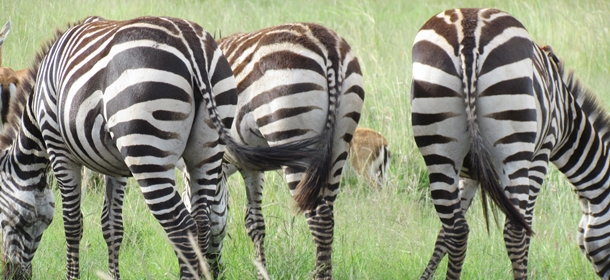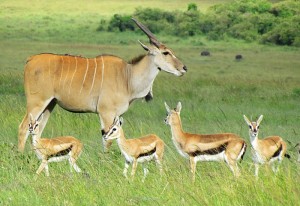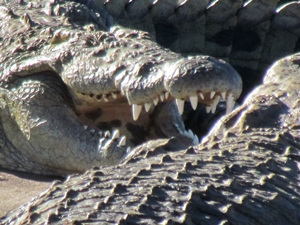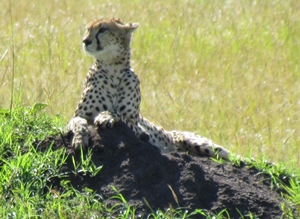 Everybody who goes on a safari holiday wants to see the Big 5: Lions, leopards, elephants, buffalo and Rhino. They are the glamorous animals, the exciting ones. They are actually based on the five animals that big game hunters wanted to shoot in order to have the most spectacular trophies to return home with and the animals that were the most dangerous to stalk. (The hippo would probably qualified for this claim, but was probably too big to stuff…)
Everybody who goes on a safari holiday wants to see the Big 5: Lions, leopards, elephants, buffalo and Rhino. They are the glamorous animals, the exciting ones. They are actually based on the five animals that big game hunters wanted to shoot in order to have the most spectacular trophies to return home with and the animals that were the most dangerous to stalk. (The hippo would probably qualified for this claim, but was probably too big to stuff…)
Now that the only shooting done is with a camera, there are plenty of other animals that are just as exciting and interesting to watch as the Big 5. For a start, there are over 70 types of antelope in Africa, ranging from the tiny Dik Dik to the Giant Eland. Each lives in a different way, evolved for the landscape and conditions in which it lives.
The Dik Dik for example has its own small territory it jealously protects from rivals. Once it finds its mate it is for life – once one of them dies it is very unusual for then to breed again. They are also perfectly adapted to their conditions.You never see a Dik Dik drink as it gains all the moisture it needs from the vegetation it eats – it would be too dangerous for such a small animals to visit waterholes during the dry season.
Other antelopes live in herds. Impala live in various ways. There are large herds of 5-100 females and young who are protected and guarded by one dominant male. The other males all live in a bachelor herd, the strongest occasionally trying to drive off the dominant male from the herd and get the females for himself. You also solitary individuals who often tag onto groups of other animals. These are often ex-dominant males who have been driven off and often don’t live much longer. The task of guarding and mating with a large herd of females wears them out after a few months and they never really recover, safe in the knowledge that their job is done and their DNA is successfully passed on.
One of the greatest spectacles in African wildlife also has nothing to do with the Big 5. The Great Migration is a constant search by over
1 million wildebeests for new grazing. It happens all year, moving through the Ngorongoro Highlands and Serengeti plains in Tanzania before arriving in the Masai Mara area of Kenya in
July to September. This is the most famous time, as these huge herds of animals try to cross the Mara river still swollen by the long rains of April to June. The fast flowing water is not the only danger. Crocodiles lie in wait in the muddy waters, looking for a young, injured or stray animals to attack and drag down to its death.
There are plenty of iconic animals also to see. What could be more African that a zebra? See them in a herd and work out which ones are the most closely related, according to their stripe patterns. (They are never identical but close relatives have similar, just as you get a family resemblance in humans.)
Watch giraffes grazing and try to catch them when they have to stoop for a drink, front legs splayed to get low enough. It turns one of Africa’s most graceful creatures into a clumsy looking creation. Look out for warthogs, one of the more amusing animals. When alarmed their small tails go bolt upright like radio antennae as they run off. They always stop after a short distance, reputably because they are not the brightest and have already forgotten what they are running from.
Listen to hyenas crunch their way through huge bones, look out for jackals sneaking quietly around scavenging food and the vast array of eagles, vultures and buzzards always circling and looking for a prospective meal. When you come to a river, look for hippos keeping cool in the waters, their young often grouped together to one side playing games of dare as they stalk geese and other small birds. Watch cheetahs lounge on old, eroded termite mounds, looking out over the grasslands for any game that gets too close. Watch in wonder as this sleek animal stalks its game, eyes fixed on its potential target.
As well as all these and many other animals, there are the birds, the reptiles, the flora and the amazing landscapes that make Africa what it is. So when you head out on safari, of course look for the large animals but don’t forget the little ones too.


